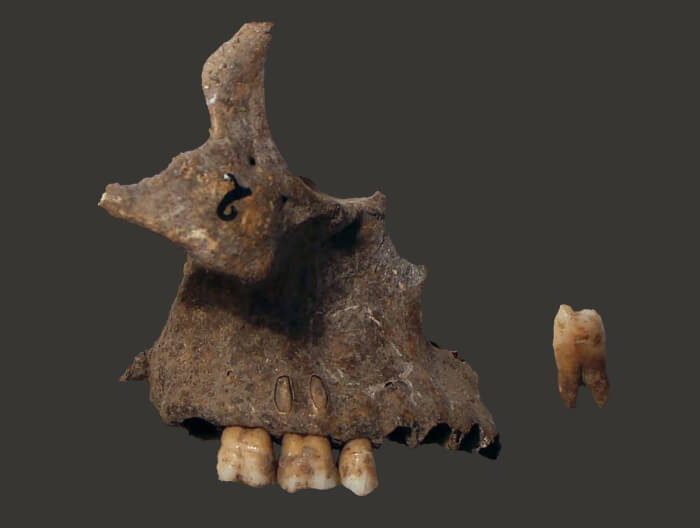Mysterious African Man Buried In Stone Age Site In... Portugal!?
Archaeologists discovered the remains of an African man living 350 years ago in a prehistoric shell midden in Amoreira, Portugal, which surprised them as the place and other midden sites in the Muge region are well-known for the graveyards of the last hunter-gatherers residing within 8 millennia ago.
Experts from Uppsala University and University of Lisbon have combined biomolecular archaeology, ancient DNA and historical records to investigate this site. They found that the skeleton was from a first-generation African, possibly Senegambia, coming to Portugal as a slave, who died around 1630 and 1760.
Meanwhile, the oxygen isotopic signal in the bone bioapatite depicts the ingested water at the man’s place of origin, probably narrowed to the coastal areas of western Africa, in present-day Mauritania, Senegal and Gambia.
Throughout the period of 300 years, Africans were treated as slaves, brutally dislocated from their homeland as well as compelling to a new religion, name and language. Their communities in Portugal advanced strategies to maintain their socio-cultural identity and values, identical to the records in the Americas.
The results acquired was used to collect other clues that potentially help researchers find out the reasons behind the man’s strange burial in an 8000-year-old site, which could be an instance of preserving African cultural beliefs and practices by African people relocated in Europe, although these aren’t recorded in historical documents.
Amoreira, similar to several other archaeological sites, might have been famous among the locals as an ancient graveyard, considering the vast number of animal and human skeletons in place. The burial site appears to have been organized with a layer of sand, proposing a level of burial preparation in an apparently deviant place. Contrary to the common tradition in Portugal from Medieval to Mid-19th century, this one wasn’t entombed in religious graveyards.
Intriguingly, up to now, people in western Africa still maintain the traditions of using shell middens, including ancient and modern cemeteries, particularly in Senegambia. The burial of the African man in a Portuguese shell midden might specify the significant meaning of the site to the African community of Amoreira based on their West African culture.
Efforts to find out this person’s identity resulted in a record from the local church dated to Nov 1st, 1676, referring to the homicide of a young man whose name was João at Arneiro da Amoreira, buried under the exact ground where the skeletal remains were discovered.
However, the church registers express that the victim was buried in the churchyard, while the skeletal remains discussed through this article was unearthed from the burtial site at Amoreira. Furthermore, the results illustrate that both of the individual’s parent were of African ancestry, while the killed guy had brown or dun skin, potentially depicting an interracial feature.
Whether the concurring site of the depicted homicide and the research on the skeletal remains is a mere coincidence, or rather the result of incompleteness, lack of detail or even accuracy of the historical records remains unknown.
However, the intersection of several lines of investigation allowed the reformation of specific aspects of the life and death of a first-generation African individual in Portugal during the Trans-Atlantic Slave Trade period despite the deficiency in the human remains and lack of historical records.
This would not otherwise have been achievable to examine from the remains in the archaeological context. Most significantly, it depicts the merit of multidisciplinary research to investigate individual African life-histories in Early Modern Europe which have been obscured in large-scale studies.
Experts from Uppsala University and University of Lisbon have combined biomolecular archaeology, ancient DNA and historical records to investigate this site. They found that the skeleton was from a first-generation African, possibly Senegambia, coming to Portugal as a slave, who died around 1630 and 1760.
 Source: Rita Peyroteo-Stjerna - University of Uppsala
Source: Rita Peyroteo-Stjerna - University of Uppsala
Meanwhile, the oxygen isotopic signal in the bone bioapatite depicts the ingested water at the man’s place of origin, probably narrowed to the coastal areas of western Africa, in present-day Mauritania, Senegal and Gambia.
Throughout the period of 300 years, Africans were treated as slaves, brutally dislocated from their homeland as well as compelling to a new religion, name and language. Their communities in Portugal advanced strategies to maintain their socio-cultural identity and values, identical to the records in the Americas.
The results acquired was used to collect other clues that potentially help researchers find out the reasons behind the man’s strange burial in an 8000-year-old site, which could be an instance of preserving African cultural beliefs and practices by African people relocated in Europe, although these aren’t recorded in historical documents.
Amoreira, similar to several other archaeological sites, might have been famous among the locals as an ancient graveyard, considering the vast number of animal and human skeletons in place. The burial site appears to have been organized with a layer of sand, proposing a level of burial preparation in an apparently deviant place. Contrary to the common tradition in Portugal from Medieval to Mid-19th century, this one wasn’t entombed in religious graveyards.
Intriguingly, up to now, people in western Africa still maintain the traditions of using shell middens, including ancient and modern cemeteries, particularly in Senegambia. The burial of the African man in a Portuguese shell midden might specify the significant meaning of the site to the African community of Amoreira based on their West African culture.
 Source: Rita Peyroteo-Stjerna - University of Uppsala
Source: Rita Peyroteo-Stjerna - University of Uppsala
Efforts to find out this person’s identity resulted in a record from the local church dated to Nov 1st, 1676, referring to the homicide of a young man whose name was João at Arneiro da Amoreira, buried under the exact ground where the skeletal remains were discovered.
However, the church registers express that the victim was buried in the churchyard, while the skeletal remains discussed through this article was unearthed from the burtial site at Amoreira. Furthermore, the results illustrate that both of the individual’s parent were of African ancestry, while the killed guy had brown or dun skin, potentially depicting an interracial feature.
Whether the concurring site of the depicted homicide and the research on the skeletal remains is a mere coincidence, or rather the result of incompleteness, lack of detail or even accuracy of the historical records remains unknown.
However, the intersection of several lines of investigation allowed the reformation of specific aspects of the life and death of a first-generation African individual in Portugal during the Trans-Atlantic Slave Trade period despite the deficiency in the human remains and lack of historical records.
This would not otherwise have been achievable to examine from the remains in the archaeological context. Most significantly, it depicts the merit of multidisciplinary research to investigate individual African life-histories in Early Modern Europe which have been obscured in large-scale studies.
Share this article
Advertisement